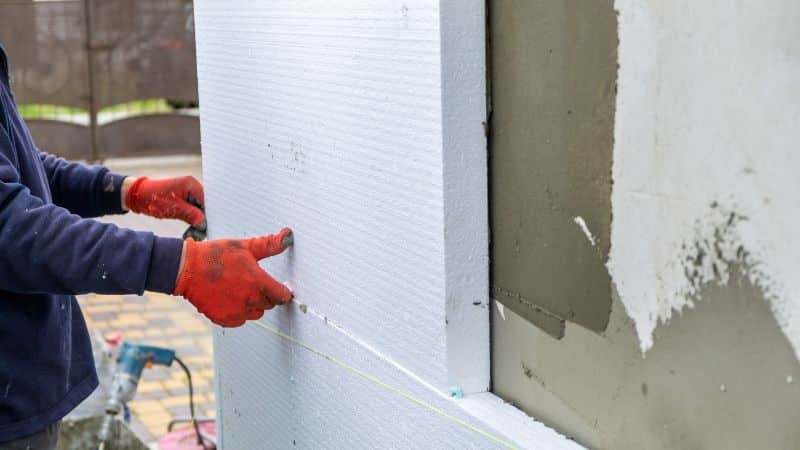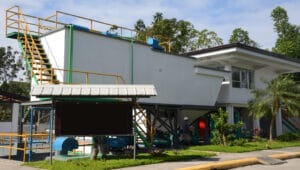The walls of your home or building greatly impact the durability and longevity of your space. Hence, protecting interior and exterior walls with wall panels and claddings is necessary. But do you need them both?
Wall paneling is applied to interior walls, while wall cladding is mostly used on exterior walls. Both provide additional protection and add aesthetic value to spaces. In addition, wall cladding improves energy efficiency and weatherproofs your building. Hence, finding the right wall cladding suppliers in the Philippines is important to ensure high-quality materials when building a new home or renovating an old space.
This article will examine the differences between wall cladding and wall paneling and the benefits of each type. Read on to learn more about which option best fits your building needs.
Understanding Wall Paneling
Nowadays, wall paneling is mainly added for its aesthetic value. However, it can also improve insulation, improve the acoustics of a room, dampen sounds, and provide privacy.
Traditionally, wall paneling in the Philippines was made of sawali, a lightweight woven material made from bamboo. This porous material was perfect for the country’s hot climate, as it improved air circulation in homes. It was a common sight in nipa huts across the country until it was replaced by wood during the Spanish colonization.
Since then, different materials have been used to create wall panels. Some of the common types are:
- Natural wood
- Fabric
- Medium-density fibers (MDFs)
- Glass
- Polyvinyl chloride (PVC)
- Vinyl
- Concrete
Wall paneling is great for homes as it creates a cozy atmosphere. It also adds a texture to the walls, adding interest and boosting the overall appearance of a room. Wood paneling makes commercial spaces more elegant and sophisticated, which is great for creating brand identities.
Overall, wall paneling can liven up space, soundproof a room, and improve insulation. It also is a great way to hide wall imperfections or minimal damage.
Exploring Wall Cladding
In comparison, wall cladding provides additional protection and weatherproofing to exterior walls. Depending on the materials used, it can also protect against insects and fires and improve the energy efficiency of homes. In particular, cement concrete and metal wall claddings enhance air circulation in homes and buildings, making them cooler even during the hot summer.
The common wall cladding materials are wood, cement concrete, and metal. They differ in durability, price, and aesthetics, so it is important to know their differences before choosing one for your building.
Wall claddings can also be customized to fit your design needs. You can check the different wall cladding suppliers in the Philippines to see the available color and style options for your exterior walls.
Comparing Wall Paneling and Cladding
Both wall paneling and wall cladding are great ways to protect walls and improve their longevity. They also add aesthetic value to these spaces. So, which one should you use for your space?
Here are the key differences between wall cladding and wall paneling.
Materials
Both wall paneling and wall cladding use wood and concrete, depending on the design choice.
However, MDF is also used to create wall paneling. It is cheaper and adds some durability to your home. However, it absorbs water quicker than traditional wood. So, it is unsuitable in places with higher humidity, like coastal areas.
Bamboo is another common material that has become popular again due to its appealing look. Moreover, bamboo mats are a much more sustainable option because bamboo grows faster than trees. Hence, they have less environmental impact than their alternatives.
In contrast, metal is one of the common exterior wall cladding materials. It is more expensive than cement concrete but matches its durability and requires less maintenance. Moreover, metal is a more sustainable material for wall cladding since it is recyclable. Other materials that are more frequently used in wall cladding are stone and brick.
Aesthetic Implications
Both wall cladding and wall paneling enhance the visual appeal of your property. However, different materials have different aesthetics.
Wall paneling adds rustic, modern, and traditional styles to your home, depending on its placement and materials. For example, MDF wall paneling looks modern and contemporary, while wood wall paneling appears more traditional and rustic.
Similarly, you can customize wall cladding to suit your design needs. For example, metal cladding is perfect for modern homes, while stone cladding gives a classic, rustic look.
Cost and long-term value
Wall cladding increases the durability of your exterior walls, making your building last longer. However, it can be more expensive than wall paneling. Still, it is a worthy investment because it makes your exterior walls sturdier and weatherproof. Moreover, some materials for wall cladding, like metal, are corrosion-resistant and low-maintenance, so they have a higher long-term value for your property.
In contrast, wall paneling is mostly an aesthetic choice. It does add some protection to the interior walls and soundproofing. However, it is different from the protection that wall cladding provides.
Thus, while expensive, wall cladding has a higher long-term value than wall paneling.
Installation process and difficulty
Wall paneling is easier to install than wall cladding, which requires some technical expertise.
Moreover, some wall paneling designs are DIY-friendly. Hence, homeowners with little to no carpentry skills can apply them and save on installation costs.
In contrast, wall cladding installation is more difficult and requires professionals. Hence, it is more expensive to install. However, as mentioned above, it is more durable than wall paneling and has better long-term value.
Having both wall paneling and wall cladding for your building will greatly impact the durability of your walls. However, they are both additional expenses that could cost you much upfront. Hence, it is important to understand their differences and benefits when deciding which one to have for your home.

Why Choose Metal Wall Cladding
If you want your walls to last longer, wall cladding is the definite choice. One of the best wall cladding materials is metal. It is perfect for the harsh weather conditions in the Philippines because it can withstand heavy rains, high heat, humidity, and strong winds.
Moreover, metal is corrosion-resistant, highly durable, and cost-effective. It is also better than other wall cladding materials because it is low maintenance. It requires minimal upkeep and is even easy to repair since the materials are widely available in most wall cladding suppliers in the Philippines.
Lastly, metal wall claddings are highly customizable to fit your aesthetic needs. For example, they are a great companion to half-cement concrete wall claddings, a popular trend in modern architecture in the Philippines.
Union Galvasteel’s Role in Wall Cladding
One of the best wall cladding suppliers in the Philippines and a leading brand in the market for over 60 years is Union Galvasteel Corporation (UGC). They manufacture and distribute high-quality pre-painting metal wall claddings in the country and have strategically located warehouses and sales offices nationwide.
One of their high-quality products is Duraspandrel, a low-maintenance and economical wall cladding material, perfect for a modern, sleek style. It comes in several colors and can be customized to your design needs.
Another recommended UGC product is Minirib, which has 12 distinctive ribs that add a distinct visual impact and emphasize the space height. It also comes in seven color variants and can be customized to fit your aesthetic.
Conclusion
Wall paneling and cladding make your property look great and protect your walls, making them last longer.
Moreover, wall paneling is perfect for making your home more inviting and personalized. It also adds soundproofing in rooms and covers minor wall damage. On the other hand, wall cladding weatherproofs your property and helps it survive the harsh weather conditions in the country.
Thus, wall cladding is the best option for your property for superior protection against weather elements and increased energy efficiency. It lasts longer than wall paneling, and if you choose metal wall cladding, you also get low-maintenance protection for your walls.
For high-quality products that can stand time and Philippine weather systems, check out Union Galvasteel Corporation’s metal cladding options. They prioritize customer satisfaction and ensure high standards in manufacturing their products. UGC offers pre-painted and other galvanized roofing materials in the country. They are also one of the leading wall cladding suppliers in the Philippines, so you will never go wrong when choosing their product lines.
For exceptional metal wall cladding materials for your property, contact us via our website and Facebook or call 09175033965 (Globe) and 09190032303 (Smart) for assistance. You can also email us at inquiries@cmg.ph.




